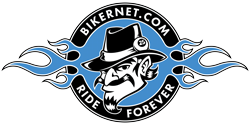China’s Ninebot unveils scooters that drive themselves to charging stations
Ninebot said Uber and Lyft, the ride-hailing giants that are expanding into scooter-sharing, would be among the customers for the new semi-autonomous vehicles that are expected to hit roads early next year. BEIJING/HONG KONG – Segway-Ninebot Group, a Beijing-based electric scooter maker, on Friday unveiled a scooter that can return itself to charging stations without […]
China’s Ninebot unveils scooters that drive themselves to charging stations Read More »
